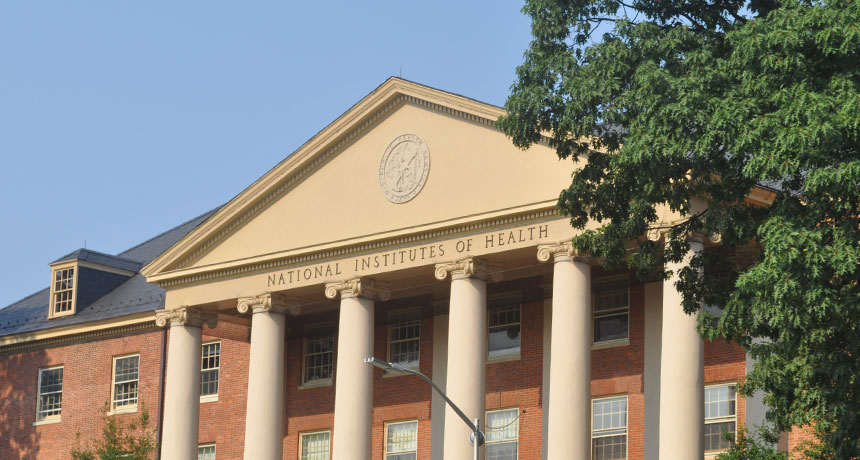New spending bill mostly boosts money for science research

After some initial waffling, President Trump signed a budget bill March 23 that lays out spending details for the rest of fiscal year 2018, which goes through September. The $1.3-trillion spending deal boosts funding for nearly all science agencies, avoiding cuts the White House had proposed.
These increases stem largely from February’s budget deal, which raised caps on discretionary spending. The National Institutes of Health, which got a $3 billion bump over the 2017 level, comes out especially well, as does the Department of Energy’s Office of Science. It receives an $868 million boost, a 16 percent increase. Climate science research and programs across several agencies also avoided big cuts that the administration had proposed.
The one outlier: the Environmental Protection Agency. At about $8.1 billion, its budget remains flat at the 2017 level.
Here are a few details that stood out to us.
NIH
NIH gets an extra $414 million for Alzheimer’s disease research, along with $400 million for the BRAIN Initiative, a research project announced by President Obama in 2013 that aims to improve our understanding of the human brain.
DOE Office of Science
Trump had proposed eliminating the Advanced Research Projects Agency-Energy, which funds research into long-shot but potentially high-reward projects. But the bill allocates an additional $47 million to the agency, a resounding rejection of the administration’s request.
NASA
The Wide-Field Infrared Survey Telescope, or WFIRST, is a proposed mission to study, in part, planets orbiting stars outside the solar system. It was recommended by the most recent decadal survey for astrophysics and remains one of NASA’s top astrophysics priorities after the James Webb Space Telescope. Trump has proposed canceling WFIRST, but the spending package includes $150 million for the telescope. Four earth science programs that Trump had targeted for elimination were also funded.
CDC
The agreement includes wording clarifying that the Centers for Disease Control and Prevention isn’t barred from studying gun violence under a 1996 amendment. The CDC has shied away from such research since that time. On Twitter, some celebrated the news, but others hailed it as a partial victory. Megan Ranney, an emergency physician and researcher at Brown University in Providence, R.I., who studies firearm injuries, tweeted the “announcement changes nothing. The issue has been, and continues to be, lack of appropriations for research.”
EPA
The agency’s overall budget remains flat as do projects with EPA’s Office of Science & Technology. Although not research related, the agency’s regulatory programs are cut by $23.5 million. The bill includes wording that prohibits the regulation of lead content in ammunition and fishing tackle and exempting livestock producers from EPA greenhouse gas regulations.
USGS
The bill includes $23 million for ShakeAlert, an earthquake early warning system on the West Coast that could be rolled out as early as October, another project that had been facing elimination. All eight of the U.S. Geological Survey’s climate science centers are funded in the agreement. The administration had proposed cutting their numbers in half, to four.